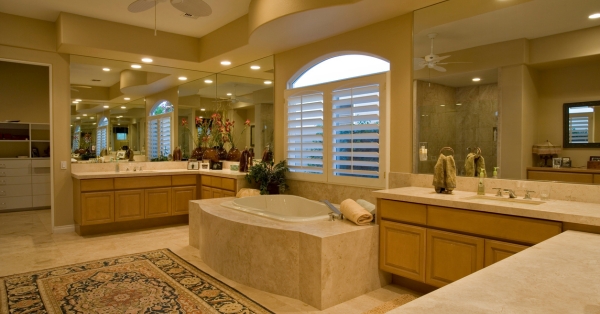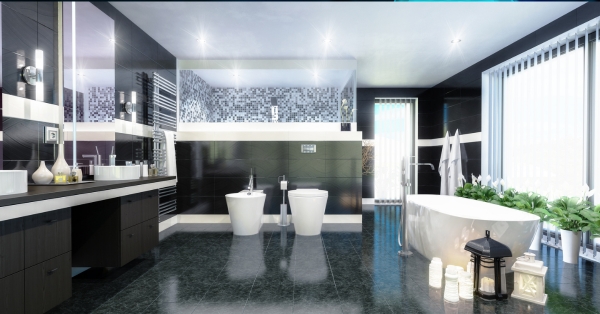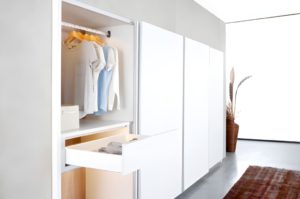In an era where environmental sustainability is more than a trend—it’s a necessity—homeowners are increasingly seeking ways to minimize their ecological footprint. The bathroom, a space characterized by high water and energy usage, offers ample opportunity for sustainable modifications. By incorporating eco-friendly practices and materials, you can create a bathroom that not only conserves resources but also offers cost savings and enhances your living space.
Water Conservation Strategies
Water conservation is a key aspect of sustainable bathroom remodeling. Implementing strategies to reduce water consumption not only helps the environment but also lowers utility bills. Here are several effective ways to achieve this:
- Low-Flow Fixtures: Installing faucets, showers, and toilets that carry the Environmental Protection Agency’s WaterSense label can significantly reduce water usage without sacrificing performance.
- Dual-Flush Toilets: These allow the user to choose a full or half flush, effectively lowering water use per flush.
- Shower Timer: Encouraging shorter showers, a simple timer can act as a reminder to conserve water.
- Rainwater Harvesting Systems: Collecting and reusing rainwater for toilet flushing or landscape irrigation can remarkably decrease the demand for freshwater resources.
- Greywater Recycling: Systems that repurpose water from showers and sinks for non-potable uses like flushing toilets or watering plants can greatly cut down on water wastage.
Sustainable Materials
Choosing sustainable materials for your bathroom remodel is crucial for reducing environmental impact and ensuring your project aligns with eco-friendly principles. Beyond considering the sustainability of materials, homeowners often question the affordability of custom builds.
The topic “Are custom builds cheaper?” is widely debated, but when it comes to sustainable remodeling, custom solutions can be designed to fit both your budget and eco-conscious goals. Here are several points to consider regarding cost and sustainability:
- Local and Recycled Materials: Utilizing locally sourced materials or those made from recycled content can reduce transportation emissions and often costs less than new, imported alternatives.
- Long-Term Savings: While the initial investment in custom-built sustainable features may be higher, the long-term savings on utility bills can offset the upfront costs.
- Durability: Choosing high-quality, sustainable materials can lead to longer-lasting furnishings and fixtures, reducing the need for frequent replacements and ultimately saving money.
- Energy Efficiency: Custom builds often include considerations for energy efficiency, such as improved insulation or solar water heaters, which can significantly reduce energy costs.
- Customization to Your Needs: By focusing on what you truly need, custom solutions can avoid the costs associated with unnecessary or overly luxurious items that don’t add value in terms of sustainability or utility.
Energy Efficiency

Optimizing lighting and ventilation in bathroom design can lead to significant energy savings. Maximizing natural light with skylights or translucent materials reduces the need for artificial lighting, saving energy and enhancing ambiance. Switching to LED bulbs for artificial lighting needs further conserves energy, as they’re more efficient and last longer than incandescent lights. Pairing LEDs with dimmer switches and occupancy sensors can optimize energy usage even more.
A good ventilation system prevents moisture buildup and mold growth, crucial for bathroom maintenance. Using energy-efficient fans to remove moist air keeps the space fresh without racking up energy costs. Together, these strategies ensure a bathroom that’s not only environmentally friendly but also pleasant and healthy to use.
Smart Bathroom Features
Smart technology integration can take sustainable bathroom design to the next level, enhancing convenience while further reducing resource waste. Here’s how:
- Smart Showers: Allow users to precisely control water temperature and flow, reducing water consumption with custom settings for different needs.
- Smart Toilets: Feature options like automatic flush based on the duration and use, reducing water usage.
- Water Leak Detectors: Notify homeowners immediately of any leaks, preventing water wastage and potential damage.
- Motion Sensor Faucets: Ensure water is only running when needed, eliminating unnecessary usage.
- Programmable Thermostats for Radiant Floor Heating: Allow for efficient heating management, ensuring the bathroom is warm when needed and conserving energy at other times.
By adopting sustainable solutions for your bathroom remodel, you create a space that serves your daily needs while also reflecting your values and contributing to planetary protection. From strategies to save water and use of eco-friendly materials to implementing smart technology, there’s a myriad of ways to make your bathroom greener.
Salvaged and Vintage Finds
Incorporating vintage or salvaged items into your bathroom not only injects character but also champions sustainability through the reuse of materials. Elements like aged sinks or tubs can transform into stunning focal points, enriching the space with history and charm.
Repurposing old furniture or cabinets for bathroom storage provides a distinctive and eco-conscious choice. This approach offers an appealing alternative to new, mass-produced products, blending functionality with environmental responsibility.
In Conclusion
Sustainable bathroom remodeling is an investment in both your home and the planet. By choosing water-conserving fixtures, sustainable materials, energy-efficient lighting, and smart features, you can create a bathroom that’s not only beautiful and functional but also kind to the environment.




Be First to Comment